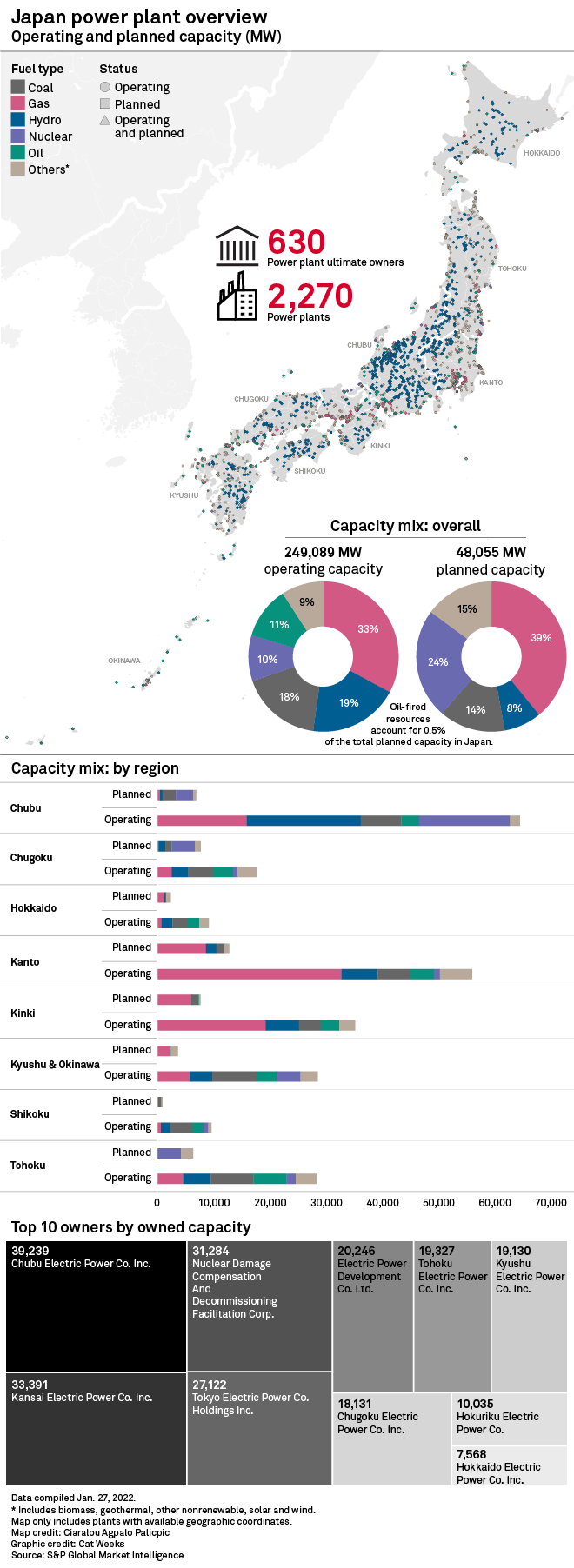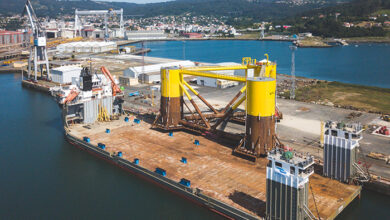S&P Global : Japan targets more renewables in power sector heavily reliant on fossil fuels

Japan’s power generation sector totals about 250 GW of operating capacity, with about half fueled by natural gas or coal, according to S&P Global Market Intelligence data.
Nuclear resources make up about 10% of the country’s generating capacity. Prior to the Fukushima disaster in 2011, when an earthquake and subsequent tsunami caused a partial meltdown at the Fukushima Dai-ichi coastal nuclear plant, nuclear resources provided about 30% of the country’s electricity, according to the Federation of Electric Cos. of Japan.
Due to safety concerns after the earthquake, Japan temporarily shut all of its nuclear plants. Since 2015, 10 out of 33 operating reactors have restarted and 15 others have sought approval to restart and are undergoing regulatory review.
According to S&P Global Market Intelligence data, about 48 GW of additional capacity, more than half gas or coal, is in various stages of planning in Japan.
With limited energy resources of its own, Japan has been the largest importer of liquefied natural gas in the world and the second-largest buyer of U.S. LNG exports, according to the U.S. International Trade Administration, though in 2021 its total imports were surpassed by China’s, according to Shell’s annual LNG market outlook.

Traditionally, Japan’s electric utility sector has primarily been served by 10 regionally focused vertically integrated companies known as general electricity companies.
The largest generating capacity is Chubu Electric Power Co. Inc., with a portfolio of more than 39 GW of both operating and planned capacity. Kansai Electric Power Co. Inc. has the second-largest total, with more than 33 GW.
The country’s transmission grid is split into eastern and western portions, operating on different frequencies, though they are linked by three converter facilities.

Utilities and trading houses have invested outside of Japan for several years, including in the European offshore wind sector and utility sector, and in the U.S. in both renewables and fossil fuels.
The country’s strategic energy plan calls for an increase of renewables, including hydro, solar, wind, biomass, and geothermal, in its energy mix to 36%-38% by 2030, up from 22%-24% currently.
JERA Co. Inc., a venture of Tokyo Electric Power Co. Holdings Inc. and Chubu Electric, on April 27 secured an alliance with Japanese renewables developer West Holdings Corp. to develop 1 GW of solar at new locations and existing JERA power plant sites in Japan through 2025. JERA is also taking a small ownership interest in West Holdings.
Japan’s strategic energy plan also has a specific target for 10 GW of offshore wind resources by 2030, which has attracted firms from outside of Japan, including oil major BP PLC and Irish independent power producer Mainstream Renewable Power Ltd.
One North American company active in Japan’s renewables sector is Chicago-headquartered independent power producer Invenergy LLC, with wind and solar projects both in operation and under development.
S&P Global Commodity Insights produces content for distribution on S&P Capital IQ Pro.













